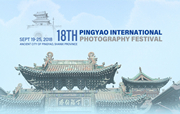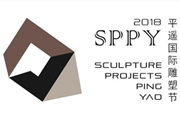2017 Pingyao International Photography Festival
Heritages offer a glimpse of ancient Pingyao
Updated: 2017-10-12( chinadaily.com.cn)
 |
| Shuanglin Temple |
Zhenguo Temple, originally named Jingcheng Temple, was first built in the Northern Han Dynasty, which exited during the Five Dynasties and Ten Kingdoms period (AD 907-960). It is renowned for its architecture. The Ten-Thousand Buddha Hall is most representative of China’s classic timberwork. The antique painted statues in the hall feature late Tang Dynasty (AD 618-907) style. They serve as fundamental reference points for the study of Chinese sculpture history as well as the sculpture styles in the Ming and Qing dynasties.
Pingyao has six major historical and cultural sites protected at the provincial level.
The Main Hall of Confucian Temples in Pingyao features exceptional Jin Dynasty-style.
Cixiang Temple located in Jiguo village was reconstructed in the Jin Dynasty (1115-1234). The lofty Lutai Tower stands within it.
Qing Xu Taoist Temple was founded in the 7th century and restored in the Yuan and Ming dynasties. Its Dragon Hall is noteworthy for its unique architecture.
The City Tower stands in the center of Pingyao. It was reconstructed in the Qing Dynasty.
Built in the Yuan Dynasty (1271-1368), Jinzhuang Confucian Temple has a collection of painted sculptures of Confucius and his disciples.
Rishengchang Draft Bank, China’s first bank-like organization, is located in Pingyao. It is now a museum where people can learn about China’s banking history.

Pingyao Wantuo
Wantuo, a type of noodle from the Qing Dynasty (1644-1911), is one of Pingyao's local snacks with a long history.


